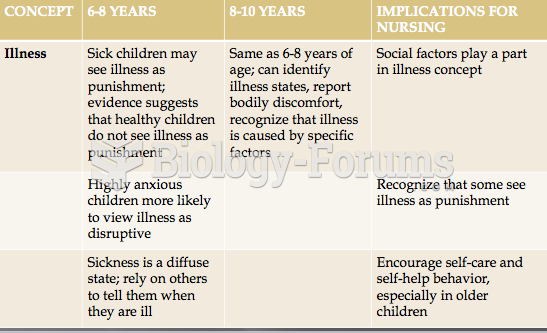Answer to Question 1
All of the various approaches had shortcoming when attempting to explain psychopathology. The biological model, while effective in treating some disorders, could not treat others. Since biological causes could not be found for some disorders, biological treatments could not be developed. Also, active intervention and treatment were all but eliminated in some settings, despite availability of other effective approaches. The psychoanalytic perspective was based on anecdotal evidence and could not be scientifically evaluated. Many of the basic tenets could not be observed. Humanistic theory contributed very little new information to the field of psychopathology. Its principles were not scientifically tested, nor were they very useful in the intervention of severe psychological disorders. The behavioral model suggested that all psychopathology was environmentally determined. It also failed to account for development of psychopathology across the lifespan. It cannot explain the more complex layers of both conscious and subconscious behaviors. As the use of scientific research techniques has continued to expand our understanding of the biological, behavioral, cognitive, emotional, developmental, and social factors that contribute to behavior, it is increasingly clear that psychopathology is multiply determined. This understanding now influences our understanding of both the causes and treatments of psychological disorders.
Answer to Question 2
The psychoanalytic theory developed by Sigmund Freud is based on three major concepts.
-Structure of the mind. According to Freud, the mind can be divided into three major parts: the id, the source of our strong sexual and aggressive feelings or energies, which operates on the pleasure principle; the ego, or the part of the mind that operates on the reality principle to ensure that we act realistically; and the superego, or conscience, which represents the moral principles of our culture. When these areas are in conflict, it can result in anxiety.
-Defense mechanisms. In order to mediate continuing conflict between the id and the superego, the ego marshals defense mechanisms or unconscious protective processes that keep primitive emotions in check. Examples include denial, displacement, projection, rationalization, reaction formation, repression, and sublimation.
-Psychosexual stages of development. Freud theorized that during infancy and early childhood, we pass through psychosexual stages of development in a specific order that affect our lifetime functioning. These stages include the oral, anal, phallic, latency, and genital stages, and are characterized by distinctive means of gratifying our basic needs and satisfying our drive for physical pleasure.







